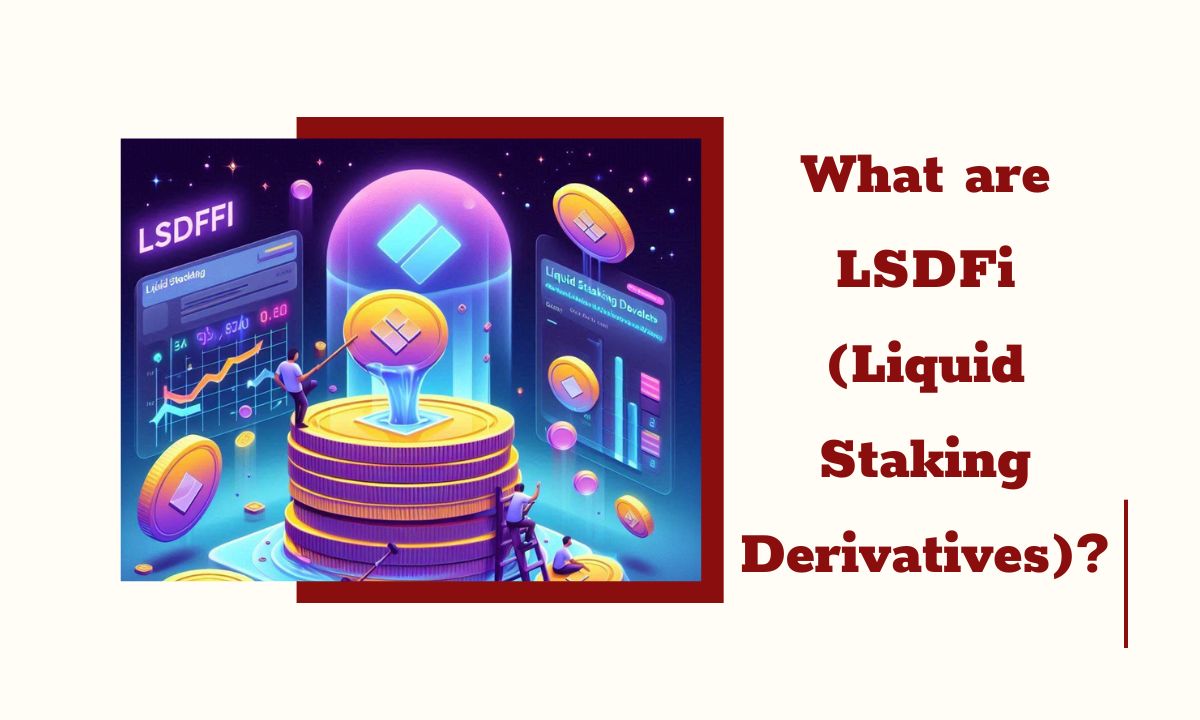LSDFi (Liquid Staking Derivatives) is a solution that has quickly gained traction in the DeFi ecosystem, offering users the ability to maximize profits while maintaining liquidity of staked assets. But does LSDFi truly provide the flexibility and benefits it promises?
In this article, AZCoin will explore LSDFi, its formation, the associated ecosystem and the risks involved.
Mục lục
What are LSDFi (Liquid Staking Derivatives)?
LSDFi (Liquid Staking Derivatives) revolves around Liquid Staking, a process where users stake their tokens in blockchain networks using proof-of-stake (PoS) consensus. When users stake their assets, they traditionally lock them for a certain period. However, LSDFi protocols allow users to receive Liquid Staking Derivatives (LSD) tokens, representing the staked assets, without locking them completely.
With LSDFi, users can continue to benefit from staking rewards while using the derivative tokens in other DeFi activities such as lending, providing liquidity, or collateralizing loans. This solution addresses the liquidity issue that traditional staking models impose, making LSDFi a crucial tool for users seeking to maximize their capital efficiency.
How LSDFi formed and developed
The growth of LSDFi is closely tied to the increasing adoption of Proof of Stake (PoS) networks like Ethereum, which transitioned from Proof of Work to PoS with the Ethereum 2.0 upgrade. As PoS models require users to lock assets for staking to secure the network, the need for maintaining liquidity arose, sparking the development of LSDFi.
Projects like StakeStone have further expanded the possibilities of LSDFi by providing platforms for users to stake and receive LSD tokens while allowing them to engage in other DeFi protocols simultaneously. This integration with various DeFi applications has pushed LSDFi into the spotlight, driving its rapid expansion across blockchain ecosystems.
LSDFi Ecosystem
The LSDFi ecosystem is evolving into a complex network of applications and platforms that leverage staked assets through derivatives. Here are some key components of the LSDFi ecosystem:
Staking Platforms
These platforms allow users to stake their assets and receive derivative tokens in return. StakeStone, for example, facilitates StakeStone registration, providing users with the opportunity to access rewards while maintaining liquidity in the form of LSD tokens.
Lending and Borrowing Protocols
With LSDFi, derivative tokens can be used as collateral in lending platforms. This means that users can stake their assets and simultaneously borrow against them, offering liquidity without losing staking rewards.
Liquidity Pools
In DEX, users can provide liquidity using LSD tokens, earning additional rewards from liquidity provision on top of staking rewards. This further enhances the utility of LSDFi by providing more opportunities for yield generation.
DeFi Aggregators
These tools bring together various DeFi opportunities, allowing users to maximize returns on their LSDFi holdings by engaging in multiple activities such as farming, staking, and lending through a single interface.
Risks of LSDFi
While LSDFi offers numerous benefits, it also carries inherent risks that users should be aware of. The primary risks include:
Smart Contract Vulnerabilities
LSDFi protocols are heavily reliant on smart contracts. Any flaws in these contracts could result in financial losses for users. Despite security audits, vulnerabilities may exist in the code that attackers could exploit.
Liquidation Risks
When using LSDs as collateral in lending protocols, market volatility can lead to liquidation if the value of the staked assets drops significantly. Users must be cautious and monitor their positions to avoid unexpected liquidations.
Centralization Concerns
Some LSDFi platforms are managed by centralized entities, which can pose risks related to governance and control. If a platform becomes too centralized, it may compromise the decentralized nature of the entire ecosystem.
Price Divergence
The value of LSDs may not always perfectly track the value of the staked assets. Due to market dynamics, the derivative tokens can trade at a discount or premium to their underlying value, adding a layer of complexity to using these derivatives effectively.
Notable LSDFi Projects
There are several notable LSDFi projects that have gained prominence in the DeFi space, each offering unique solutions for liquid staking:
Lido
Lido is one of the most well-known platforms for LSDFi, allowing users to stake ETH and receive stETH (staked Ether) in return. This LSD can be used across DeFi protocols, giving users liquidity while participating in staking.
StakeStone
StakeStone is another emerging player in the LSDFi ecosystem, offering seamless staking services with derivatives that users can utilize for other DeFi activities. StakeStone registration is straightforward, and users benefit from both staking rewards and the ability to use their LSD tokens elsewhere in the DeFi space.
Manta Pacific
A growing platform in the LSDFi arena, Manta Pacific provides users with a secure and user-friendly way to participate in LSDFi while offering a range of tools to maximize liquidity and staking efficiency.
Rocket Pool
Rocket Pool offers decentralized staking services with a focus on providing LSD for Ethereum. Users can stake their ETH and receive rETH, which can then be used across multiple DeFi platforms, offering liquidity and flexibility.
Conclusion
The above is a comprehensive overview of LSDFi (Liquid Staking Derivatives) and the reasons behind its rapid growth. LSDFi is transforming how users interact with staked assets, providing unprecedented liquidity while maximizing returns in the DeFi space.
